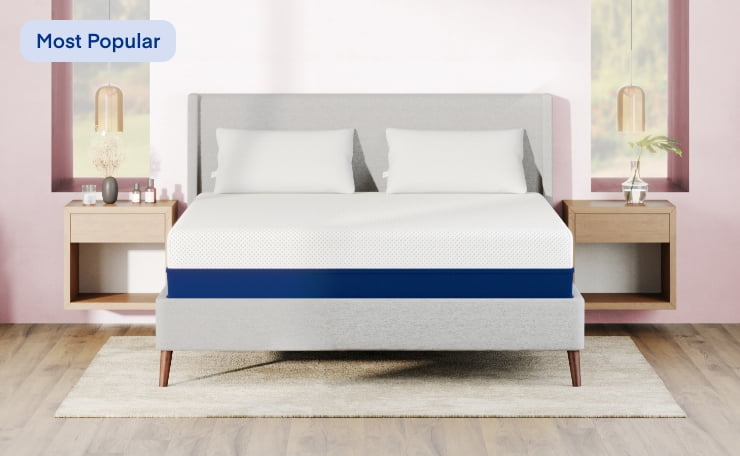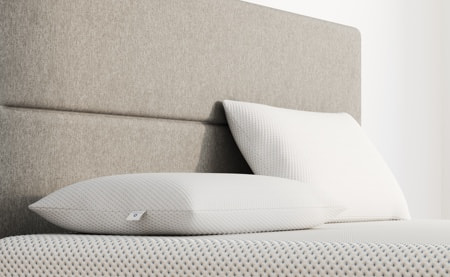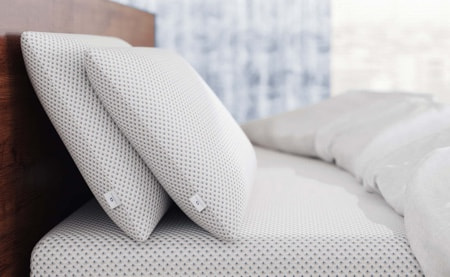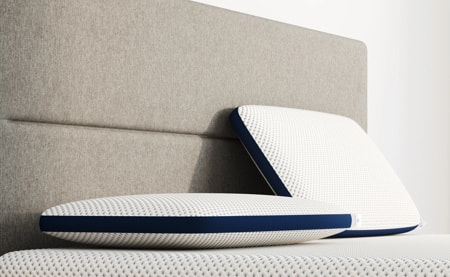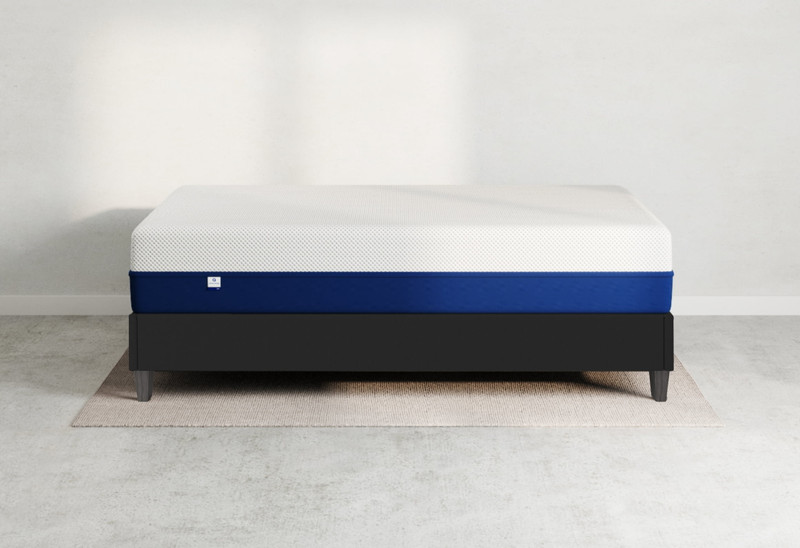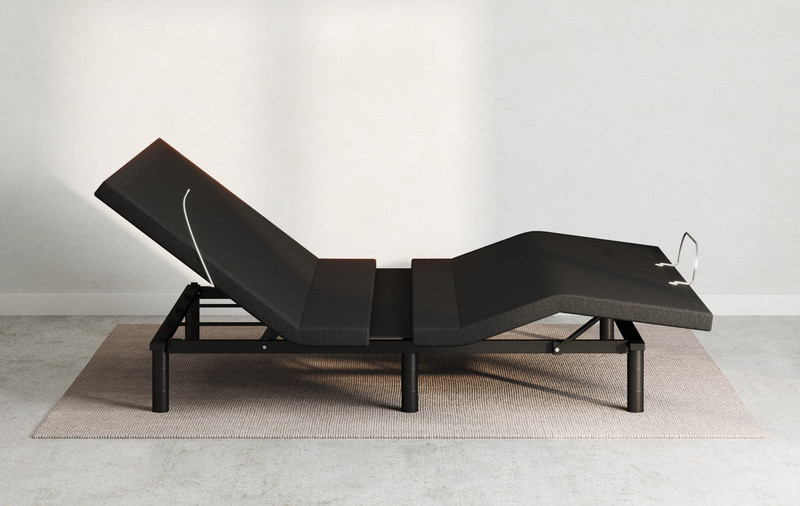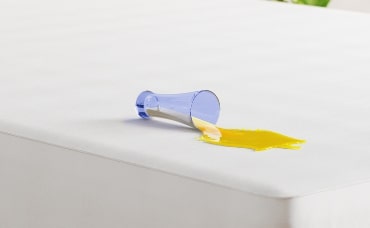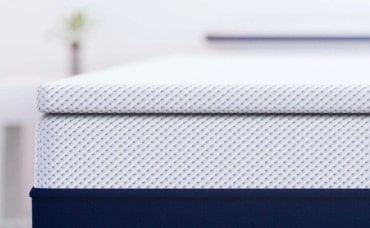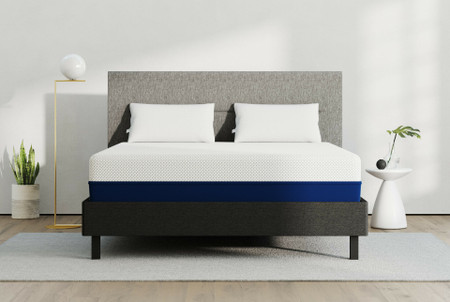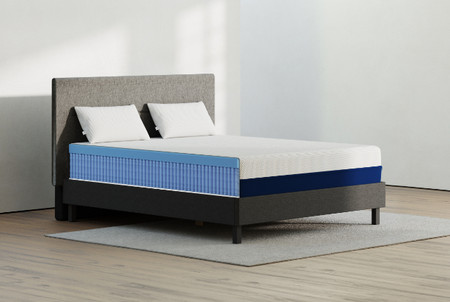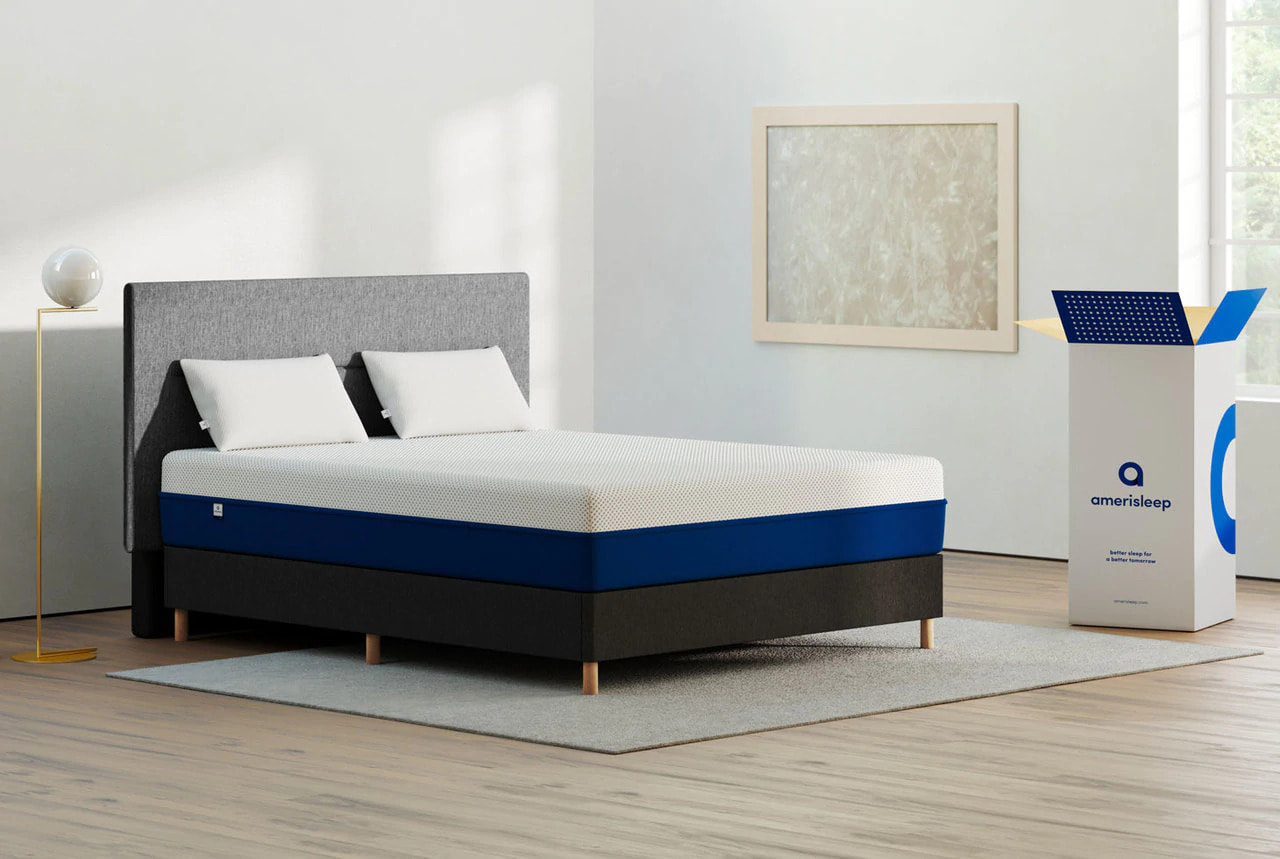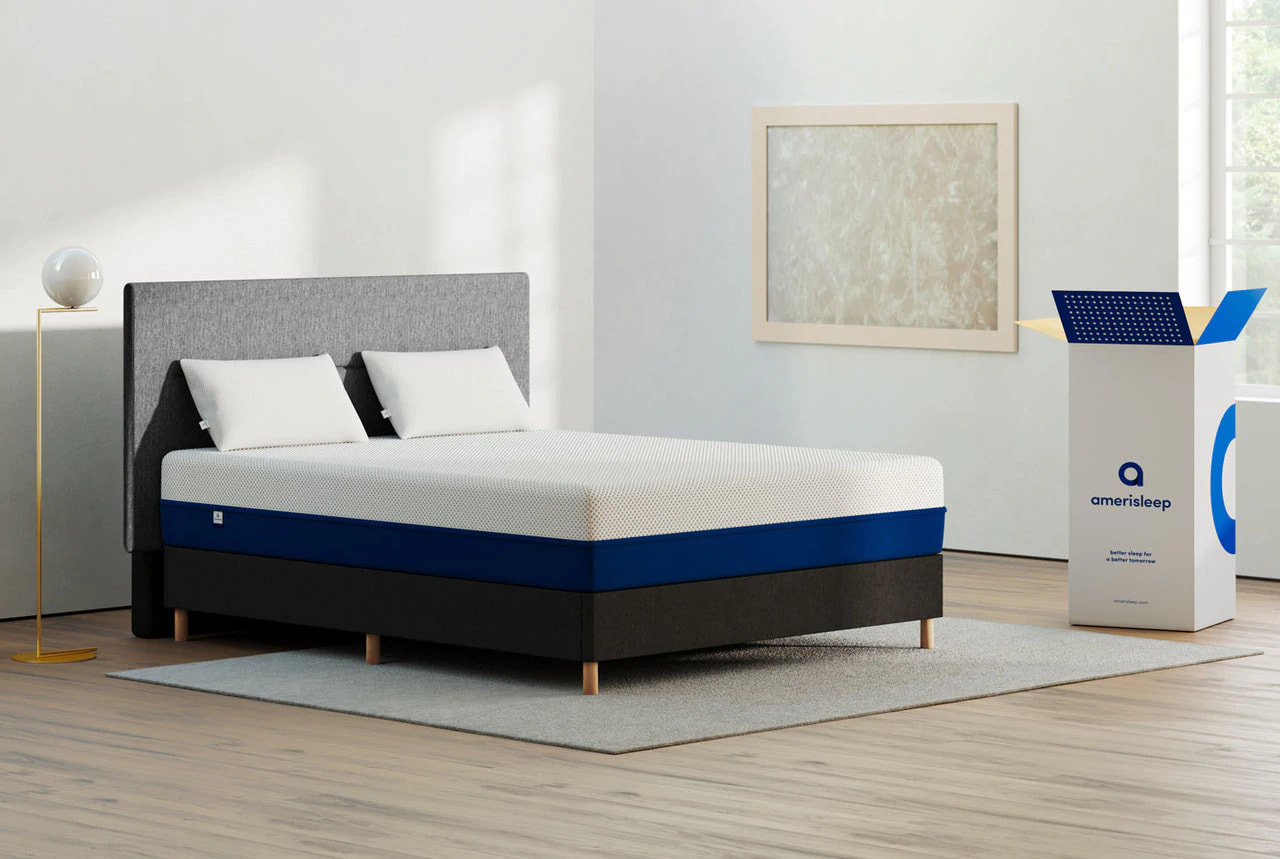What is the best mattress for back pain?
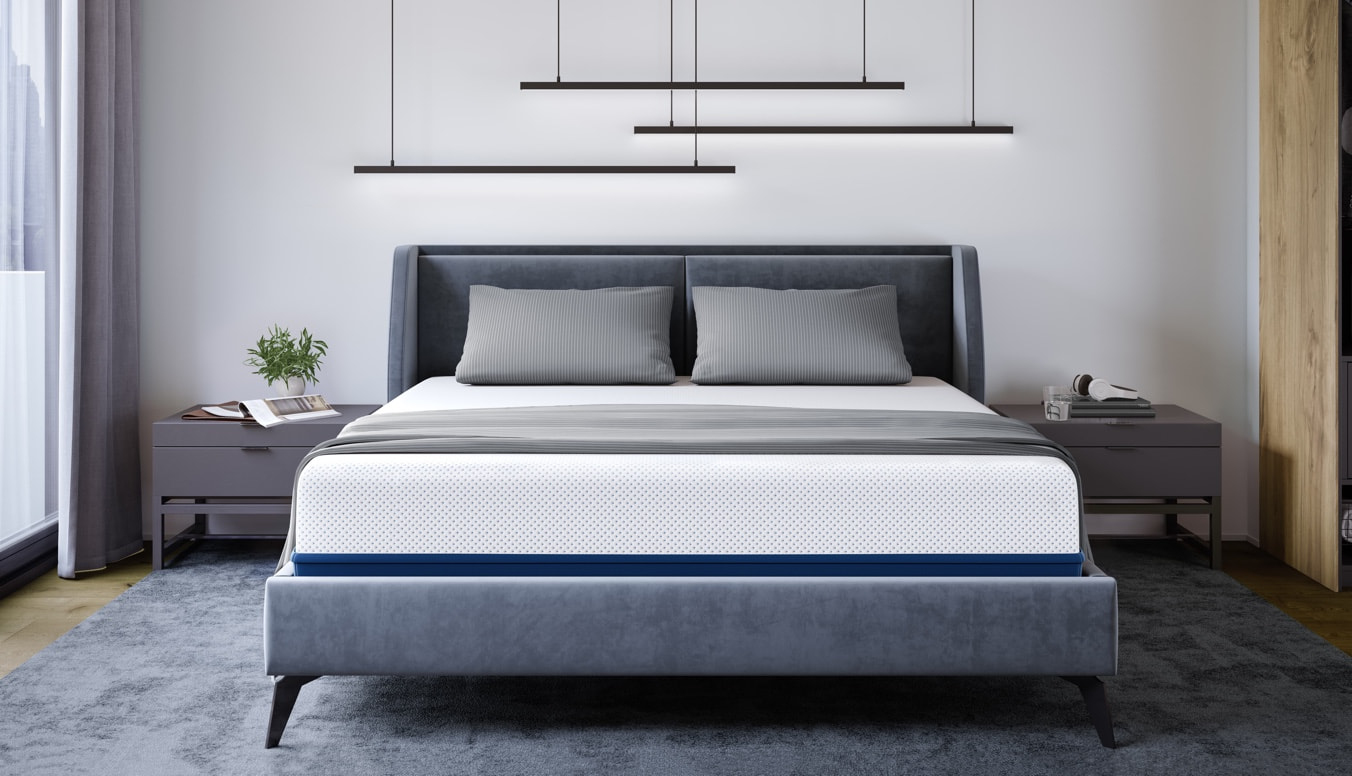
Eight out of ten people will have back pain at some point in their lives1. Symptoms range from a dull, constant ache to acute, debilitating pain.
And since people spend about one-third of their lives in bed, the mattress you use can impact whether or not you suffer from back pain more than almost anything else. That's why so many people are searching for the best mattress for back pain.
Scientific studies have proven that getting the right mattress for back pain can improve your symptoms and sleep quality2. The best mattresses for back pain will evenly support your weight and allow your spine to remain aligned. When looking for the best mattress for back pain, the two main things to consider are its firmness and the materials it's made from.
The best mattresses for back pain will evenly support your weight and allow your spine to remain aligned.
“The Best Mattress for Back Pain,”
according to Verywell Health3.

-
 Best For Back Sleepers
Best For Back SleepersAS2
Our most popular mattress for dynamic support and back pain relief. -
 Most Popular
Most PopularAS3
Our top-selling mattress. Blends support, softness and pressure relief for all sleep styles. -
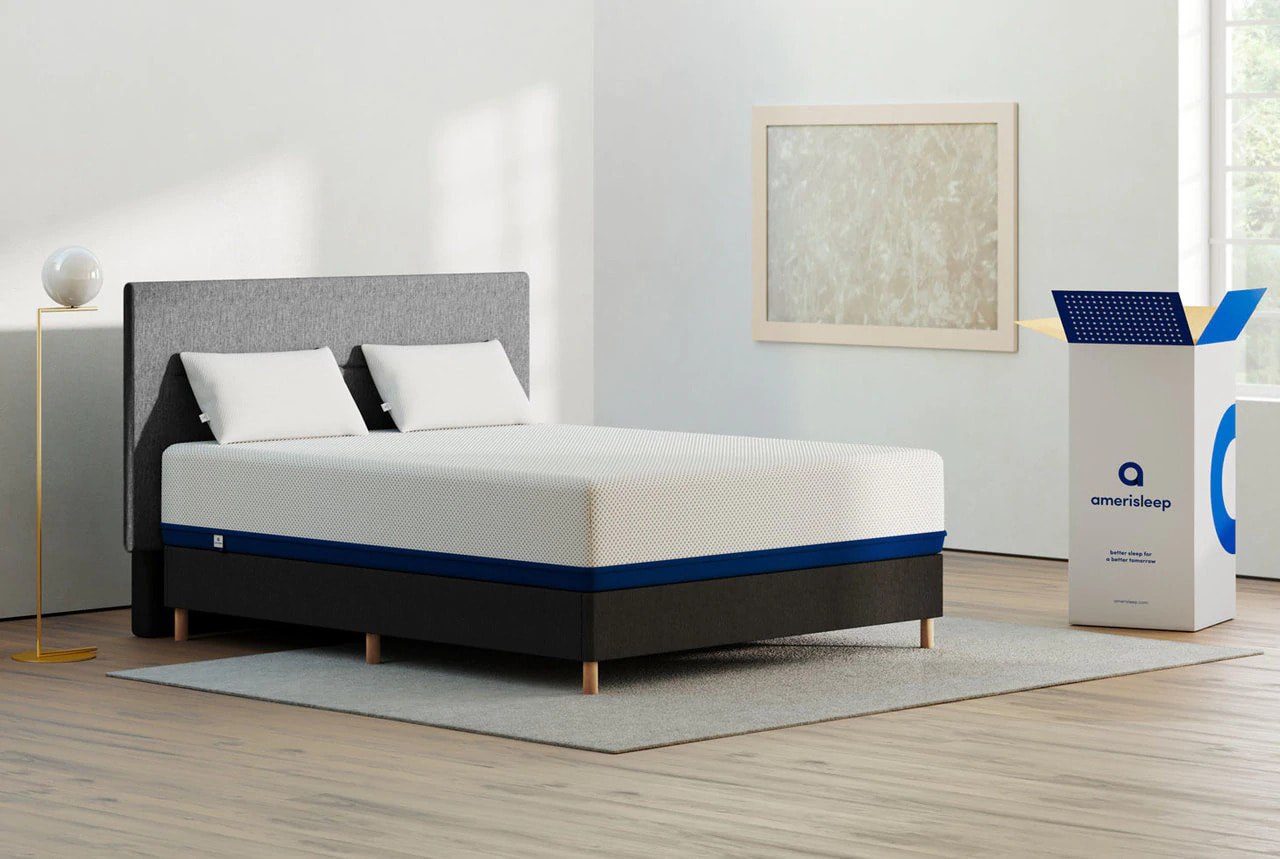 Most Advanced
Most AdvancedAS4
Best soft mattress, featuring four inches of memory foam for weightless comfort.
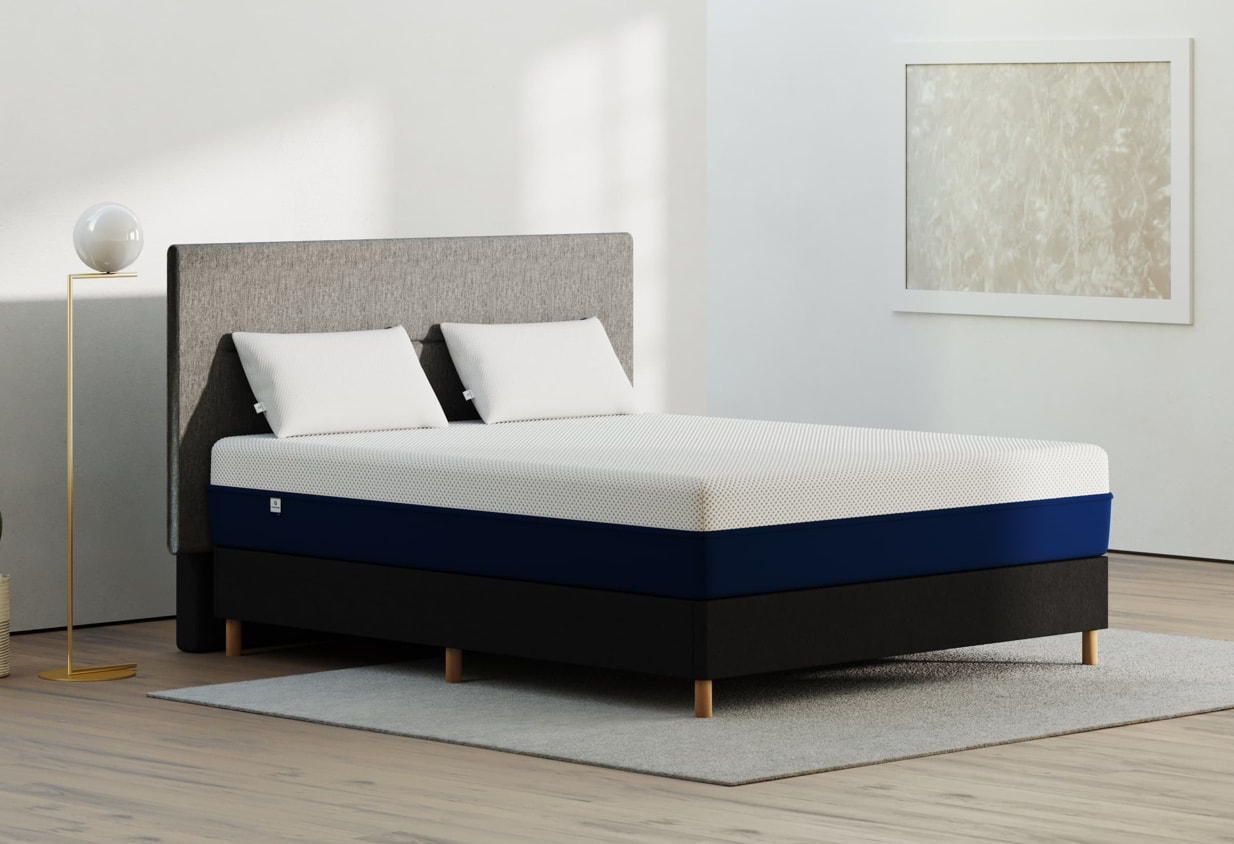
The AS2
- Our medium-firm mattress offers comfortable support with targeted pressure relief that stays cool all night.
- Our Bio-Pur® comfort layer contours to your body and relieves pain-causing pressure points. But it also bounces back fast, so you never feel “stuck” if you move around at night.
- Our plant-based Bio-Pur® material keeps you cool all night. It features an open-cell design that allows more air to escape than traditional foam.
The AS3
- With a medium feel, the AS3 evenly blends support and softness. The HIVE® layer contours to your body and relieves pain-causing pressure points.
- Our Bio-Pur® comfort layer contours to your body and relieves pain-causing pressure points. But it also bounces back fast, so you never feel “stuck” if you move around at night.
- Our HIVE® transition layer gives your body targeted support to ease tension and help you sleep in perfect alignment. It provides added support under your head, back, and legs. And it gives your shoulders and hips extra cushion.
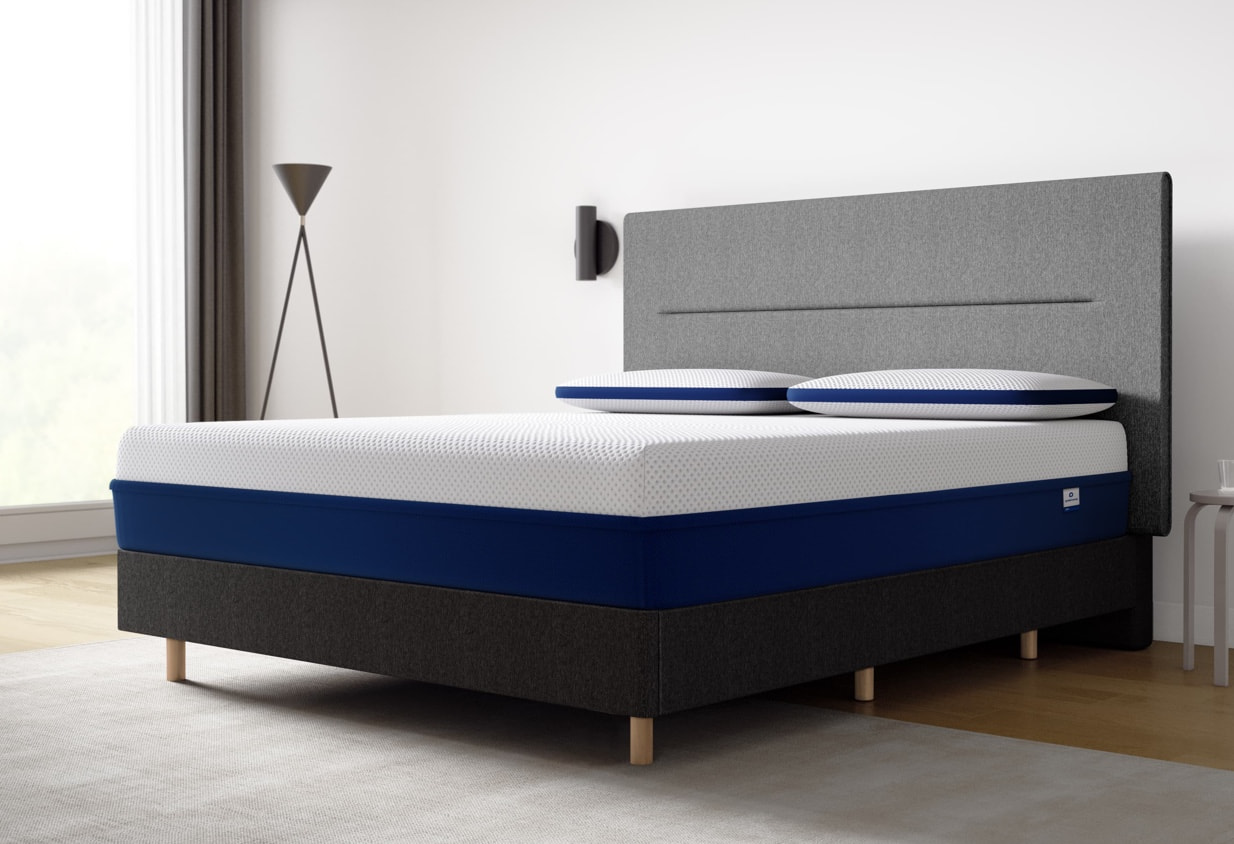

The AS4
- Our medium-soft mattress offers plush comfort with targeted support that helps you sleep your best.
- Our Bio-Pur® comfort layer contours to your body and relieves pain-causing pressure points. But it also bounces back fast, so you never feel “stuck” if you move around at night.
- Our plant-based Bio-Pur® material keeps you cool all night. It features an open-cell design that allows more air to escape than traditional foam.
Amerisleep Adjustable Beds
While our bases each have their unique advantages, they share a few key similarities too.
- Easy to assemble, with no extra tools required
- Designed to promote better sleep and prevent discomfort
- Provides solid, sturdy support for your mattress and prevents sagging
- Universally compatible and can be used as a stand-alone base or within your existing bed frame
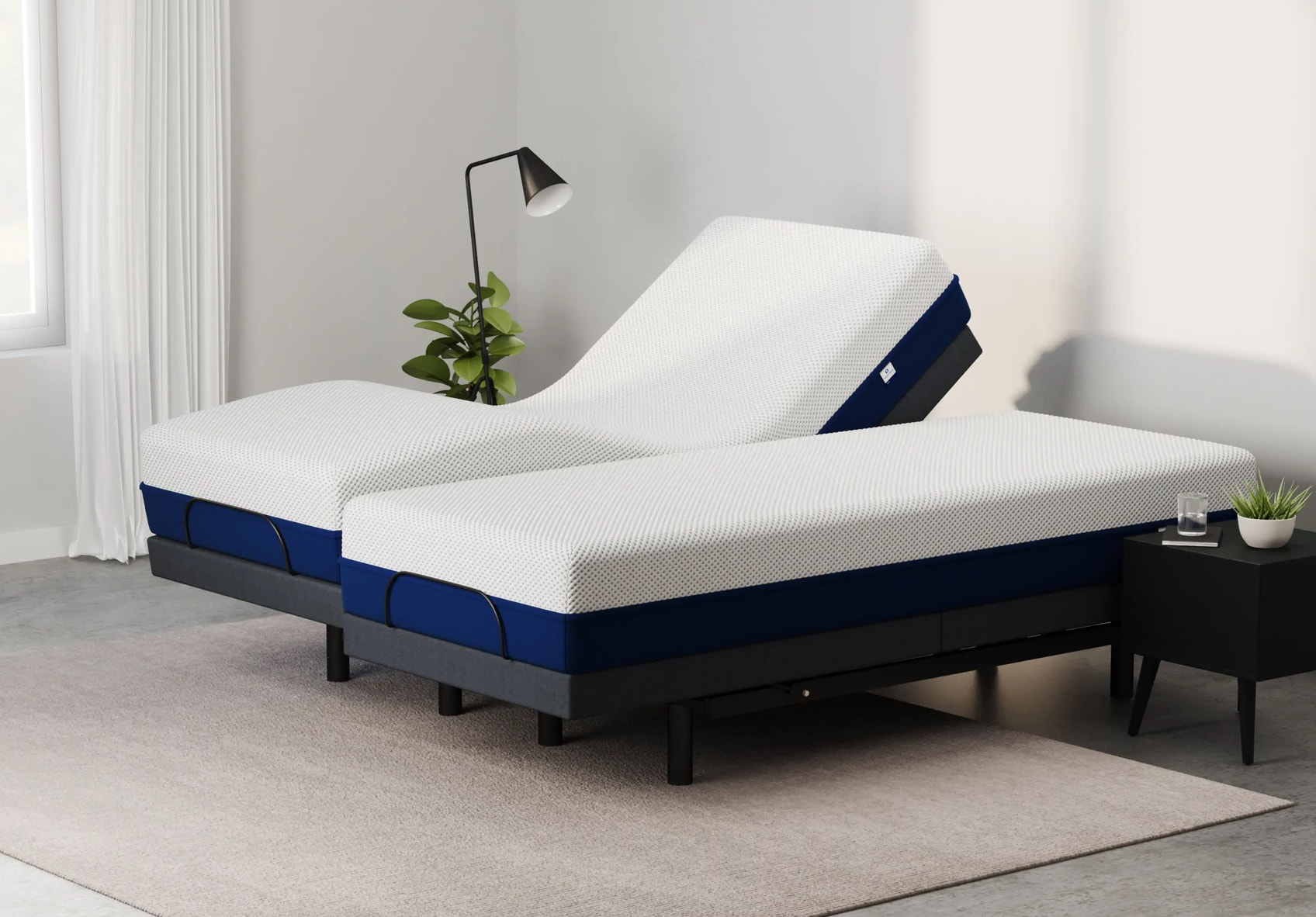

It has a medium-firm feel, which research shows is often the best at reducing back pain4. And it uses our proprietary HIVE® layer to keep your body aligned and reduce pain-causing pressure points. When your body is out of alignment during sleep, you are more likely to wake up with aches and discomfort.
Shop The Amerisleep AS2 nowFirmness
For years doctors believed the best mattress for lower-back pain should be stiff and firm. That changed in 2003 when a study showed that it might actually make the problem worse though
In a study by the National Center for Biotechnology Information, 313 patients who had a history of unexplained chronic lower-back pain had their existing mattress replaced with either a new "firm" or "medium-firm" one4.
Afterwards the patients rated their pain on a scale from1 to 10, both when they woke up and again 30 minutes later.
The study showed the best mattress for back pain was the medium-firm version. It reduced pain in far more patients than the firm mattress. 82% of the patients who used the medium-firm mattress said their pain improved. Only 68% from the firm mattress group said the same.
-
82% pain improved with medium-firm
-
68% pain improved with firm mattress
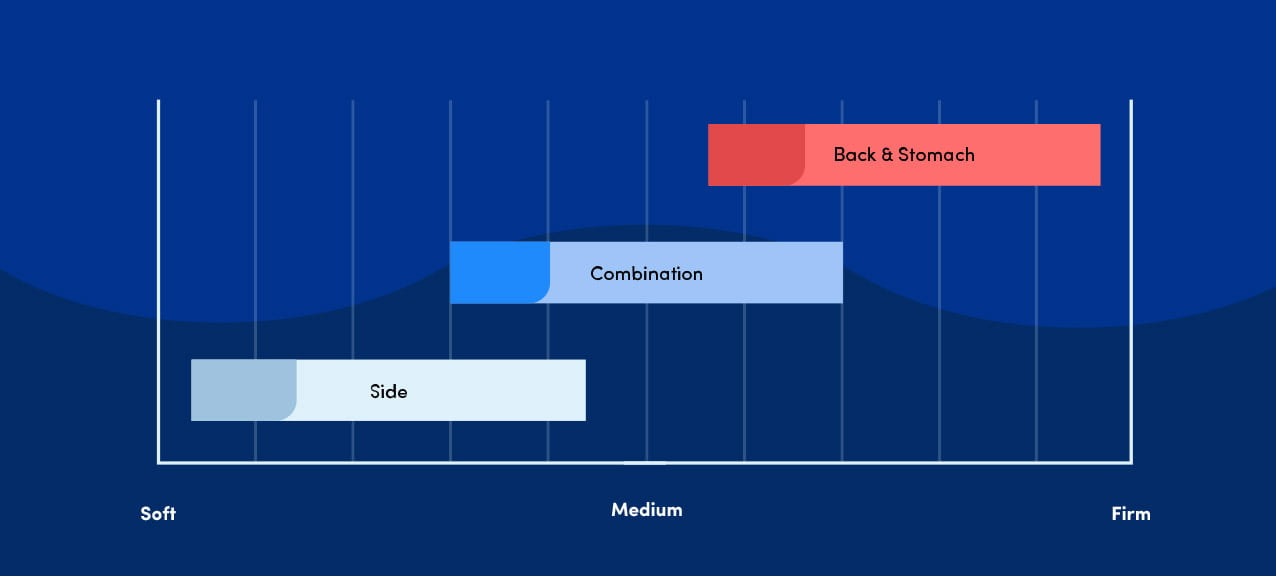
According to experts, the best bed for back pain should have medium-firm support — like the Amerisleep AS2. That's because it adapts to the natural curvatures of the spine. This allows the body to sleep in a more ergonomic position, alleviating pressure on joints and other key body parts.
A separate study revealed that medium-firm mattresses reduce back pain by 57.2%, shoulder pain by 60.8%, and back stiffness by 59.1%. Combined this helped improved participant sleep quality by 60.7%5.
According to experts, the best bed for back pain should have medium-firm support — like the Amerisleep AS2.
Order today and save $300 on better sleep, backed by our 100-night trial with free returns
Shop mattressesMattress Materials
When choosing the best mattress for back pain, the materials used to build
it are another key
consideration.
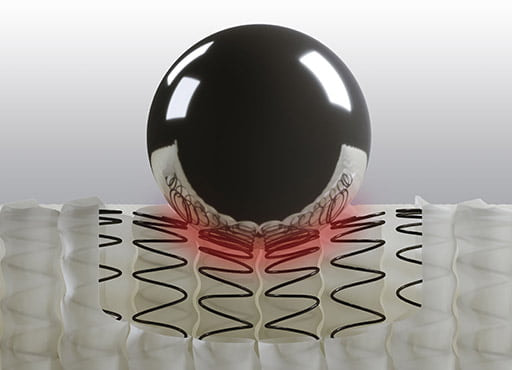
Innerspring
Traditional innerspring mattresses have hard metal coils inside that push up on you when you lay on them. Since each spring works in isolation, this method does not evenly distribute weight. Additionally, it causes painful pressure points.
The springs often become stiff or loose over time as well, reducing support for your lower back and spinal cord even further.
This can draw the spine out of alignment, which is one of the most common causes of back pain. On top of that, other medical conditions like herniated disks, osteoarthritis, degenerative disk disease, and spinal stenosis can become worse if your back does not have proper support during sleep.
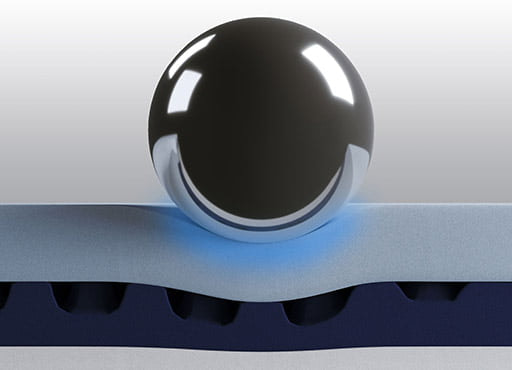
Memory Foam
In contrast, mattresses made out of memory foam have become the top choice for many people suffering from back pain. Research shows that the average memory foam mattress gets 80% customer satisfaction. The average for innersprings is only 60% — a full 20 percentage points lower.
Memory foam mattresses have better satisfaction ratings because they provide adaptive and even support, especially when used with an adjustable bed frame, which helps evenly distribute your body weight, eliminating pressure points and other discomfort. Memory foam also is less likely to sag or weaken over time, so it will provide consistent support for decades.
Studies have shown foam mattresses significantly reduce periods of interrupted sleep compared to traditional spring mattresses6. This is especially important for people suffering from back pain because multiple studies have found that people with lower-back pain have more disturbed, less restful, and less refreshing sleep compared to people without back problems8,9.
This creates a negative feedback loop. The pain interferes with sleep, and those sleep disruptions further contribute to the experience of pain9.
Memory foam mattresses can help break this cycle by providing a deep, restful sleep that allows your body to heal more effectively.
Studies have shown foam mattresses significantly reduce periods of interrupted sleep compared to traditional spring mattresses6.

The Amerisleep AS2 is “The best mattress for back pain”
Verywell Health calls the Amerisleep AS2 “The Best Mattress for Back Pain”3.
First, it has a medium-firm feel. We cited many studies above that prove this is the ideal firmness for relieving back pain. Your needs may be different though. That’s why Amerisleep has a suite of five mattresses that range from firm to soft.
find out which one is best for youNext, the AS2 contains Amerisleep’s HIVE® layer. It provides targeted support in five comfort zones to facilitate healthy spinal alignment and alleviate back pains.
The HIVE® layer contains hundreds of foam hexagons. We group the hexagons closer together in the comfort zones for the head, back, and feet. This provides increased firmness and support, since the hexagons have less room to expand. And we do the opposite in the shoulders and hips, where you need more cushion. By increasing the space between the hexagons, they can compress more to add softness where you need it most.
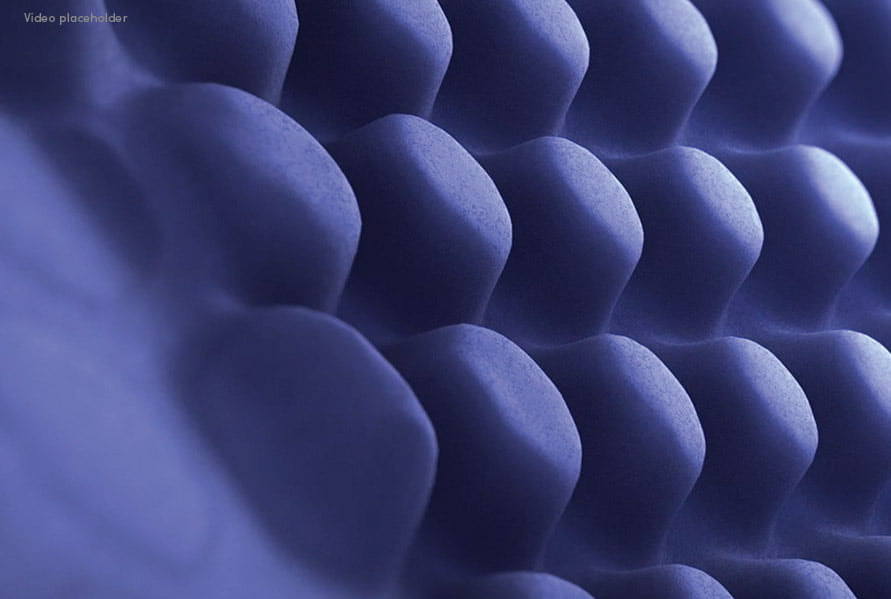

The Amerisleep AS2 also features a soft, ultra-breathable cover to help you stay comfortable and prevent back pain. By wicking away warm air, the cover on the AS2 keeps you cool. That way, you can sleep in the most supportive position for your back without overheating.
The Bio-Pur® material inside the AS2 also delivers cool and comfortable support, because it has an open-cell structure. That means it bounces back 10 times faster than traditional memory foam, so you won’t feel “stuck” if you move around at night. Plus, it is five times more breathable than other foams, so it lets more warm air escape and keeps you cool and comfortable at all times. (Bio-Pur® also comes from partially plant-based sources, so it’s better for the environment, too.)
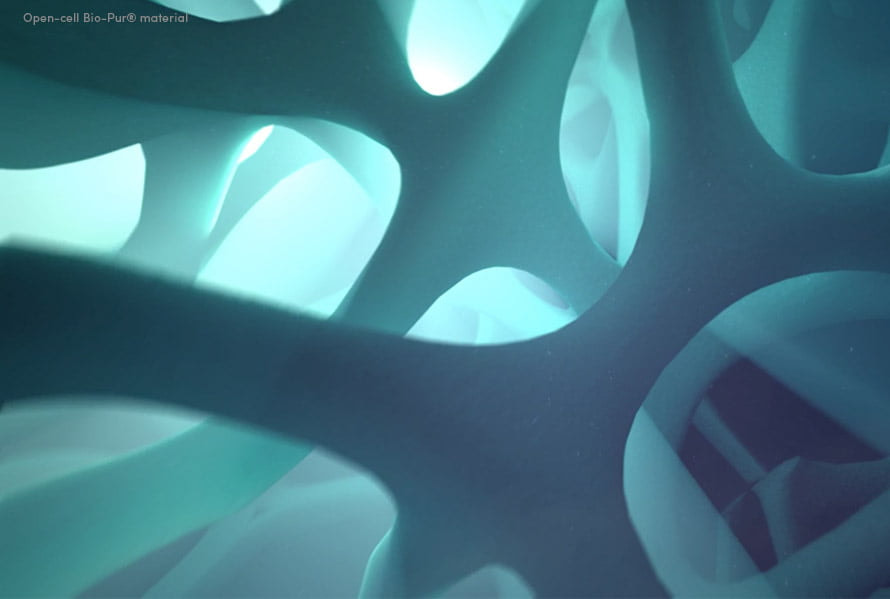
At Amerisleep, we designed our mattresses to be gentle but supportive. That’s why over 92% of Amerisleep customers, many of whom used to suffer from back pain, say that our mattresses are comfortable and offer good support. Additionally,98% of our customers would recommend us to a friend.
So if you suffer from back pain, give the Amerisleep AS2 a shot. It even comes with a risk-free, 100-night trial. If you’re not completely satisfied, let us know within 100 nights and we’ll give you a full refund.
And if you want even more customized support, you can pair our AS2 mattress with an adjustable bed. This will let you adjust the head and foot elevations, which can help take even more pressure off your spine and lower back. That way, you can sleep in the perfect position every night — and wake up refreshed and pain-free!
Get your Amerisleep AS2 now — and save even more when you bundle it with an adjustable base.
Over 92% of Amerisleep customers, many of whom used to suffer from back pain, say that our mattresses are comfortable and offer good support.
Order today and save $300 on better sleep, backed by our 100-night trial with free returns
Shop mattressesOther Things to Consider
Foam
Memory foam mattresses are popular because they contour closely to the body and relieves pressure points for a more comfortable night’s rest. However, it can seem expensive to some. Polyurethane foam, or poly-foam, is a slightly cheaper alternative with a similar feel. Poly-foam is not viscoelastic like memory foam, meaning it doesn’t respond as well to compression and heat. It’s also more likely to trap heat compared to advanced open-cell memory foams like those in the AS2. In short, poly-foam is good for a tight budget but it might not be best for back pain.
Hybrid
Hybrid mattresses combine all the benefits of innersprings with memory foam. However, not all are created equal. Some hybrid beds contain poly-foam in the quilted pillow top layers instead of memory or latex foam (both of which are more durable and close-conforming).
All hybrids have steel innerspring coils in the bottom core layer; to reduce motion transfer, the coils are often wrapped in fabric or thin foam. This mitigates the issue innersprings are so often known for— being so bouncy they let you feel all the movements of your partner.
Hybrids must have at least 2-3 inches of foam to be considered hybrids, and most models contain even more than that. The foam is usually memory foam or latex foam, but some brands use poly-foam. Memory foam or latex foam will offer more pain relief and contouring than poly-foam, so if you’re considering a hybrid and you experience chronic pain, make sure you know the type of foam used in the comfort layers.
Hybrids tend to feel slightly firmer and bouncier than memory foam or latex beds thanks to the coils. While the coils keep the bed cool, they can still press against the back, intensifying inflammation and pain.
Latex
Latex feels quite similar to memory foam, but it’s more durable because of the resource it’s made from. Natural latex is gathered from the sap of rubber trees, and the same rubber tree can be harvested over a period of 20+ years. Latex beds can last for up to 15 years and the aerated surface stays cool and sag-free after years of use.
While latex conforms closely like memory foam, it is slightly firmer and bouncier. This can be an issue for back-pain sufferers. If you want to try out a latex bed, be sure a medium-firm option is offered so you can enjoy the balance of comfort and support chronic back pain sufferers need.
Note that synthetic latex will not have the same eco-friendly qualities or durability as natural latex mattresses do. Synthetic latex may not feel as plush as natural latex, either, so back pain sufferers should beware of synthetic foam blends.
We know that chronic pain is one of the leading causes of sleep disruption and deprivation, but how does back pain in particular lead to restless nights? And does the cycle of sleep deprivation make back pain even worse?
One 2017 study learned that chronic back pain patients with higher pain ratings experienced poorer sleep quality compared to those with manageable, daytime back pain. Additionally, these patients with more severe back pain experienced daytime sleepiness, negative mood, and lower overall function during the day.
Unfortunately, a good night of sleep did not completely cure study participants of their back pain issues, and as such, back pain requires more medical intervention than a high-quality, new mattress can provide. However, we know healthy sleep hygiene leads to a higher quality of life, increased mental acuity, and more time for the muscles to repair during the night— without this last critical process that occurs during sleep, we are bound to wake up achy and sore.
Just like you wouldn’t choose a twin-size mattress if you shared your bed with a partner (get a queen size mattress), you probably wouldn’t pick a firmer mattress if you like to sleep on your side. Your sleeping position has a huge impact on your mattress comfort level, so finding the best mattress for your preferred sleeping position is key to waking up pain-free.
Side Sleepers
Side sleeping is the most popular position and it’s also one of the healthiest. That doesn’t mean it comes without drawbacks, though! Side-sleepers most often tuck their arms underneath their heads while they rest, putting them at risk for paresthesia, or that familiar “pins and needles” feeling.
For side sleepers with back pain, this can become a bigger concern because circulation is cut off to the limbs, leading to limited flexibility and stiffness. The best mattress for side sleepers and a mid-loft pillow that isn’t too soft will keep the head elevated off the arms and hands while cushioning the shoulders.
Side-sleepers typically choose medium or medium-firm mattresses, which is also the recommended firmness for those with chronic back pain. Since a medium or medium-firm mattress can feel different across various brands and mattress types, make sure you do further research before purchasing the first medium or medium-firm bed you find.
Back Sleepers
Back sleepers have a great advantage when it comes to preventing further back pain—they’re already in the best sleeping position for keeping the spine neutral. Using a good pillow will maintain the natural S-curvature of the spine without throwing anything out of alignment.
Back sleepers most often choose a firm or medium-firm mattress—however, if you experience chronic back pain, err more on the medium-firm or medium side. This will ensure the mattress has adequate comfort layers for pressure relief and contouring.
Stomach Sleepers
Stomach sleeping is the least healthy position, especially for anyone with back pain. It puts the sleeper at risk for misaligned hips and neck pain. What’s more, if stomach sleepers sleep on a pillow more than 2-3 inches thick, they can cause serious pain or injury to their backs.
If you sleep this way and experience frequent back pain, try training yourself to sleep in a different position. You can do this by using a body pillow or placing a mid-loft pillow between your legs while you sleep. Back pain sufferers should avoid stomach sleeping if at all possible.
A relatively healthy individual usually won’t have to look far to find a comfortable mattress. But for the 80% of Americans who experience chronic back pain, choosing the right mattress is a higher-stakes situation—after all, if they pick an uncomfortable bed, they could risk making their back pain even worse. While back pain sufferers may have to invest more time and a little more money, the promise of a good night’s rest is worth it.
Ideal Firmness
We know based on studies that a medium-firm mattress seems to be the best comfort level for those with back pain, but your sleeping position and weight also play a part in how firm your mattress will actually feel. For example, sleepers who weigh over 230 pounds should not choose firm mattresses, since they will easily compress the thinner comfort layers and make contact with the high-density, stiff base foam. What do you think this leads to? You guessed it—more back pain.
Most brands rate their mattresses using a firmness scale from 1-10, with one feeling extremely soft and plush and ten feeling very firm (like a futon bed). Most bed-in-a-box mattress brands fall between a 3-8 on the scale with a few exceptions. Medium and medium-firm beds fall between 5-7 on the scale, so look for that distinction on the company’s website. If you cannot find a clear indicator of the firmness, contact the company’s customer service representatives through the chat function on their website or a contact form.
Support and Durability
Support refers to a mattress’s ability to maintain an even sleeping surface without the risk of sagging or indenting. As you can imagine, lots of sags in the mattress surface trap you “in” the bed and don’t allow for much movement during the night. Anyone who experiences back pain knows a sagging mattress only makes back pain worse.
Mattress materials and layer composition will have the most impact on support. For instance, a foam mattress with thick layers of comfort foam and thinner base foam in the foundation will sag quicker because the base foam won’t hold up under all the compression from the softer upper layers.
Amerisleep’s sturdy Bio-Core® foam at the base of all its mattresses, including the AS2, is what allows Amerisleep to offer a 20-year warranty (the industry warranty standard is 10 years). That means you can be sure the mattress won’t sag even after lots of use.
If you’re worried about the support and durability of your mattress, look at the warranty and what it covers. Most warranties cover sagging below a certain depth, but sometimes the depth at which they will replace or repair the mattress has already become a nuisance and made your pain worse.
A comfortable, supportive mattress is a great place to start when you’re dealing with back pain, but there’s a little more you can do barring medical intervention.
Mattress Toppers
If you’re on a relatively new mattress but you still wake up with back pain, you don’t need to go out and buy a new bed just yet. You can use a mattress topper to add an extra foam layer of cushioning on top. Most mattress toppers are made using memory foam, latex foam, or gel memory foam. They’re a more affordable alternative to purchasing a new mattress, but keep in mind they are still a temporary solution.
Mattress toppers aren’t the same thing as mattress protectors—we recommend everyone use a protector to keep the surface of their mattress clean and free of any stains (which can void your warranty). However, a mattress protector won’t add a layer of cushioning like a mattress topper will, so if you’re suffering from back pain, start with a topper.
The firmness level of most mattress toppers falls between medium-soft and medium-firm.
Pillows
Your pillow should work in tandem with your sleeping position to maintain healthy spinal alignment. Those with low back pain sometimes benefit from sleeping with a pillow between their legs, which eases tension in the hips and pelvis. A pillow placed here can also help the sleeper avoid twisting or turning their hips unnaturally during the night, misaligning the spine.
If you have a bad back, your shoulders are at risk for aches and pains, too. Side-sleepers should choose a mid-loft pillow made of memory foam or latex foam. They will probably sleep best on a pillow with a solid piece of foam inside instead of shredded foam, which contours a bit more to the shape of the head and sinks down (increasing the risk of neck pain).
Back sleepers most often choose a medium or high-loft pillow so their necks are not arched too low. Since they are in a position more likely to experience neck pain, a lower-loft pillow can increase pressure points in the neck, shoulders, and even the back.
Stomach sleepers should face less risk for pain if they sleep on a low-loft pillow or no pillow at all.
Pillows with adjustable filling work well for most, since they allow you to customize the feel and shape of the pillow for your sleep position, head circumference, and weight.
Adjustable Beds
Perhaps you think adjustable beds are for the older crowd, but anyone wanting a more customized sleep experience can benefit from an adjustable bed. Adjustable bed frames allow you to elevate your head and feet to preferred angles, increasing circulation, easing tension and pressure points, and allowing your muscles to recover quickly. Anyone dealing with chronic pain is likely to enjoy an even better sleep experience on an adjustable bed.
What type of mattress is best for back pain?
Back pain can be relieved by lowering pressure on the back area. Mattresses usually accomplish this task with a conforming top layer that molds to the body, leaving no part unsupported. Memory foam, latex, and hybrid mattresses all contain a foam top layer that follows the body’s curves, easing pressure on the spine and muscles.
However, traditional innerspring mattresses aren’t the best type of mattress for back pain. Most such spring mattresses have only a thin layer of cushion, enabling pressure to build up across the body.
Does my weight affect the feel of the mattress?
Yes, your weight will impact how a mattress feels! Heavier individuals with back pain should look for medium-firm mattresses with strong support cores in the base. Lightweight individuals with back pain will most likely be comfortable on a medium or medium-firm mattress with plenty of cushioning in the top comfort layers.
Your weight also plays into how thick your mattress should be—in general, most should choose a mattress between 10-12 inches, but heavier sleepers will need a mattress at least 12 inches thick, and sometimes even a 14-inch bed is best.
What's the best mattress for side sleepers with back pain?
When it comes to easing back pain in side sleepers, we recommend medium mattresses for a balance of comfortable cushion and support. A medium mattress keeps the shoulders and hips from sinking too far into the bed, minimizing the odds of spine misalignment. Plus, the surface conforms enough to mold to these heavier parts of the body and ease the pressure.
Our AS3 mattresses and natural latex Organica bed all possess a medium feel.
What's the best mattress for back sleepers with back pain?
Back sleepers with back pain often benefit from lying on a medium-firm mattress. The AS2 mattress is our medium-firm model and comes in a memory foam or hybrid mattress form.
The memory foam AS2 is good for back sleepers shopping on a budget for a bed that cradles the body. Meanwhile, the hybrid AS2 is well suited for back sleepers who prefer more buoyancy in their mattress.
Is a firm or soft mattress best for back pain?
Overall, a mattress with a touch of firmness is the better choice, but the exact answer depends on your sleep style. For most sleepers, a medium to medium-firm mattress provides the right balance of cushion and support to alleviate back pain. However, stomach sleepers might need a firm mattress, although they might be better served by switching to back or side sleeping.
What’s important is to avoid a mattress that’s too soft or too firm. If the mattress is too soft, a sleeper can sink uncomfortably far into the surface, misaligning their spine. Conversely, a too-firm mattress can leave sensitive areas uncushioned, letting pressure build up into pain.
What's the best sleeping position for lower back pain?
If you’re experiencing lower back pain, it’s beneficial to lie down on your back with your knees elevated. Raising the knees reduces pressure on the lower back, decreasing the chances of aches or stiffness. An adjustable bed can elevate the legs for increased comfort, and a wedge pillow is a good option if you’re living on a restricted budget.
What's the best sleeping position for upper back pain?
Sleeping on your side or back are good positions to ease and prevent upper back pain. Lying on your back helps the spine maintain a neutral alignment, while side sleeping is good if your upper back pain is mostly on one side of your body.
Because the upper back, shoulders, and neck are all closely connected, it’s important to prevent shoulder and neck pain. Your pillow should conform equally to your head and neck, while the mattress should offer some cushion for your shoulders. Shoulder support is critical if you’re a side sleeper.
- 1 Vallfors B. Acute, Subacute and Chronic Low Back Pain: Clinical Symptoms, Absenteeism and Working Environment. Scan J Rehab Med Suppl. 1985;11:1-98.
- 2 Jacobson BH, Boolani A, Smith DB. Changes in back pain, sleep quality, and perceived stress after introduction of new bedding systems. J Chiropr Med. 2009;8(1):1-8.
- 3 “The 9 Best Mattresses for Back Pain of 2020” Verywell Health
- 4 Kovacs FM, Abraira V, Pena A, et al. Effect of firmness of mattress on chronic non-specific low-back pain: randomised, double-blind, controlled, multicentre trial. Lancet. 2003;362:1599-1604.
- 5 Jacobson BH, Gemmell HA, Hayes BM, Altena TS. Effectiveness of a selected bedding system on quality of sleep, low back pain, shoulder pain, and spine stiffness. J Manipulative Physiol Ther. 2002;25:88-92.
- 6 Scharf MB, Stover R, McDannold M, Kaye H, Berkowitz DV. Comparative effects of sleep on a standard mattress to an experimental foam surface on sleep architecture and CAP rates. Sleep. 1997;20(12):1197-1200.
- 7 Cesta A, Moldofsky H, Lue FA, et al. Sleep and musculoskeletal pain in workers following a soft tissue injury. Sleep. 1998;21:289.
- 8 Hartman K, Pivik RT. Sleep, Variations in motor and EEG activities in chronic low back pain subjects: relationship to sleep quality. Sleep Res. 1995;24:393.
- 10 Moldofsky H. Sleep and pain. Sleep Med Rev. 2001;5(5):385-396.

